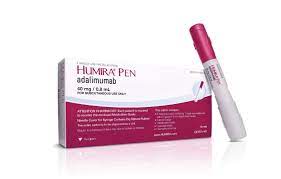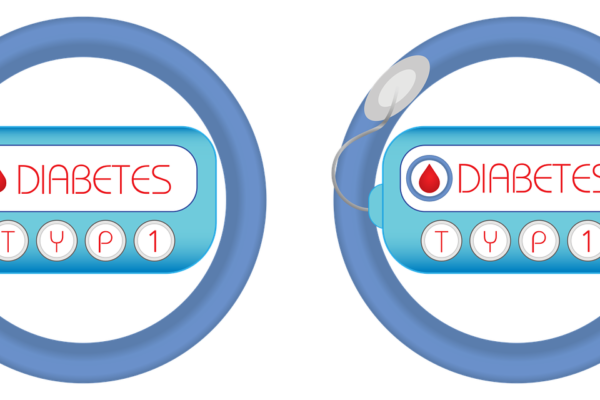Semaglutide
Semaglutide is a drug developed by Novo Nordisk in 2012, used to treat type 2 diabetes and obesity and is marketed under the brand names Ozempic, Wegovy, and Rybelsus. It is a member of the pharmacological class known as GLP-1 receptor agonists (glucagon-like peptide-1 receptor agonists). The hormone GLP-1, which aids in controlling blood sugar levels and hunger, is mimicked by semaglutide.
Semaglutide is typically used combined with diet and exercise in the treatment of type 2 diabetes to enhance glycemic control. It aids in promoting the release of insulin, lowering the hormone glucagon secretion (which elevates blood sugar levels), delaying stomach emptying, and fostering a sensation of fullness that encourages reduced food consumption.
Semaglutide has also been given the go-ahead to treat obesity. It is often paired with lifestyle changes and provided in this situation at a larger dose than it is for diabetes. By lessening appetite, raising fullness, and causing a decrease in caloric intake, the medicine aids in weight loss.
A subcutaneous injection of semaglutide is given once each week. For diabetes, it is marketed as Ozempic, and for obesity, as Wegovy. More over 4 million prescriptions were issued for semaglutide in 2020, ranking it as the 129th most popular drug in the country.
The half-life of semaglutide in blood is approximately seven days (165–184 hours). It can be given once a week via subcutaneous injection or once a day orally. It can be anticipated to accumulate more after each injection of the same dose or an increasing dose based on its half-life and dosing frequency. As a result, individuals taking the same dose over a 4-week period may see an increase in side effects as well as a potential rise in satiety-inducing activity.
A 2.0 mg once-weekly dose of semaglutide was predicted using a plasma concentration vs. time curve following subcutaneous injection. After each injection, the drug will continue to build up in the blood for a given dose of semaglutide until steady-state is reached. After repeat weekly administration of the same amount for 28 to 35 days, a steady state is anticipated.
Constipation, abdominal pain, headaches, fatigue, heartburn, indigestion/heartburn, dizziness, bloating (abdominal distension), belching, low blood sugar (hypoglycemia) in people with type 2 diabetes, gas (flatulence), gastroenteritis, and gastroesophageal reflux disease (GERD) are a few examples of possible side effects.
Semaglutide Market Share
Diabetes, also referred to as diabetes mellitus, is a chronic disease in which the blood glucose levels are elevated over the normal range. Diabetes is a condition in which the pancreas either fails to make enough insulin (Type 1) or the body is unable to properly use it (Type 2).
A chronic condition known as type 2 diabetes occurs when the body is unable to adequately metabolise glucose, meaning that it has grown resistant to the hormone insulin, which the pancreas secretes to regulate blood sugar levels. Although type 2 diabetes is more frequently observed in adults, it is also becoming more prevalent in youngsters. Increased hunger and thirst, frequent urination, exhaustion, sores that take longer than usual to heal, and blurred vision are all signs of type 2 diabetes.
By 2032, it is anticipated that the market for diabetic medications will be worth US$103.52 billion.
Due to the world’s fast-growing diabetic population and the recent development of cost-effective and efficient diabetic medications by market players, the diabetes drug industry is anticipated to expand at the fastest rate over the forecast period.
The main purpose of diabetes medications is to lower patients’ blood sugar levels. Most type 1 diabetes individuals are advised to use insulin to keep their blood sugar levels stable. Various market participants are also researching and developing additional medication classes specifically for type 2 diabetic patients.
A drug called Semaglutide is used to treat type 2 diabetes. The drug functions similarly to the hormone glucagon-like peptide-1, which promotes the body’s production of insulin to control blood glucose levels. The medication has been recommended by the U.S. Food and Drug Administration (FDA), together with diet and exercise, to help type 2 diabetic individuals control their blood sugar levels.
The size of the semaglutide market is estimated to be USD 2.17 billion in 2021 and USD 4.60 billion in 2030, growing at a CAGR of 8.71% from 2023 to 2030.
The prevalence of type 2 diabetes has been rising consistently over the world as a result of factors like sedentary lifestyles, poor diets, and ageing populations. As a result, there is a rising need for efficient drugs like semaglutide to treat and manage the illness.
The market is divided into two categories based on type: injection and oral. A long-acting glucagon-like peptide receptor agonist is injection semaglutide. It is the first drug of its kind to be licenced for use in individuals with type 2 diabetes or prediabetes , who are obese or overweight, have high blood pressure, or other factors associated with cardiovascular disease. While, Oral semaglutide is a once-daily formulation of the medication, blood sugar is controlled with just one dose each day. The medication also has fewer negative effects than other diabetic medications and does not result in weight gain or appetite loss, which can occasionally be substantial with insulin therapy.
The market is divided into Hospitals and Clinics based on Application. Semaglutide is a medication used in hospitals to treat type II diabetes. It is a GLP-II agonist that increases pancreatic insulin production in order to reduce blood sugar levels. In contrast to exenatide, liraglutide, and other comparable medications, the injection of semaglutide encourages the release of insulin, which, in turn, decreases blood glucose levels and accelerates weight reduction.
The global Semaglutide market is divided into various regions based on geography: North America, Europe, Asia Pacific, and the Rest of the World. Over 71% of the global market in 2022 belonged to North America, and it is predicted that throughout the forecast period, this market will expand at a significant rate. The increased demand has been influenced by the rising incidence of diabetes and public awareness of the value of disease management. Furthermore, semaglutide access has been made easier by favourable reimbursement regulations and healthcare infrastructure. Additionally, the North American market is anticipated to increase as a result of the existence of major industry competitors and the launch of cutting-edge formulations.
Key players in the market include Novo Nordisk A/S, Eli Lilly and Co., AstraZeneca PLC, Sanofi S.A., Merck & Co., Inc., Boehringer Ingelheim International GmbH, Takeda Pharmaceutical Company Limited, Johnson & Johnson, Bristol-Myers Squibb Company, AbbVie Inc., Pfizer Inc., Mylan N.V., Novartis International AG, Teva Pharmaceutical Industries Ltd., and Sun Pharmaceutical Industries Ltd. etc.
In the GLP-1 RA class, some of Semaglutide’s competitors include as follows:
- A GLP-1 RA used to treat type 2 diabetes is Liraglutide (Victoza). It comes in daily and weekly injection forms and works in a manner that is comparable to semaglutide.
- A once-weekly GLP-1 RA called Dulaglutide (Trulicity) has been approved for the treatment of type 2 diabetes. With a weekly dose schedule, it provides convenience.
- Exenatide (Byetta, Bydureon): Exenatide comes in two different dosage forms: Byetta, which is taken twice a day, and Bydureon, an injectable that is given once a week. To treat type 2 diabetes, both formulations are employed.
- Liraglutide (Victoza): Another GLP-1 RA used to treat diabetes
- Albiglutide (Tanzeum): For the treatment of type 2 diabetes, albiglutide is a once-weekly GLP-1 RA. The product has been taken from the American market, nevertheless
- Lixisenatide (Adlyxin): Lixisenatide is a once-daily GLP-1 RA. It is used in individuals with type 2 diabetes as an additional therapy.
For the treatment of type 2 diabetes, Semaglutide is preferred for a number of reasons:
Effectiveness: Semaglutide has shown to be highly effective in lowering blood sugar levels in persons with type 2 diabetes. Clinical studies have demonstrated that it significantly lowers body weight, HbA1c levels, and blood glucose levels.
Convenience: Semaglutide is a once-weekly injectable drug sold under the brand name Ozempic. Compared to daily dosage regimens, this one offers convenience and might increase medicine adherence.
Benefits of weight loss: Semaglutide has been linked to a considerable reduction in weight in type 2 diabetics. This is especially advantageous for people who are overweight or obese because losing weight can help to enhance insulin sensitivity and metabolic health in general.
Efficacy: Semaglutide has shown to be highly effective in treating type 2 diabetes by enhancing glycemic control.
Benefits for the cardiovascular system: According to clinical studies, semaglutide lowers the risk of serious adverse cardiovascular events among type 2 diabetics who are at high cardiovascular risk, such as heart attacks, strokes, and cardiovascular death.
Oral formulation: Rybelsus, the first and only oral GLP-1 RA authorised for the treatment of type 2 diabetes, is the oral formulation of semaglutide, which is also a drug option. Those who like oral medication over injectables now have a choice.
It is however essential to remember that selecting a prescription for type 2 diabetes is a personal decision that should take into account the patient’s preferences, coexisting conditions, cost, and healthcare provider’s advice. To select the best course of treatment, consultation with a medical expert is required.
Conclusion
The type 2 diabetes medication semaglutide was widely available on the market. Due to its effectiveness and distinctive once-weekly dosing schedule, it has garnered attention and acceptance among patients and healthcare professionals.
Since its approval, semaglutide, which is sold under the trade name Ozempic, has exhibited encouraging sales and growth. The financial records of Novo Nordisk show that Ozempic sales have been rising consistently. Ozempic earned around $2.8 billion in global sales in 2020.
Semaglutide’s commercial presence has also been helped by its oral formulation, Rybelsus. Patients who prefer oral drugs to injectable ones have an alternative with Rybelsus, the first oral GLP-1 RA authorised for type 2 diabetes. Therefore, market analysts are confident in its future growth prospects.
References:
https://www.coherentmarketinsights.com/market-insight/semaglutide-market-3314






Leave a Reply